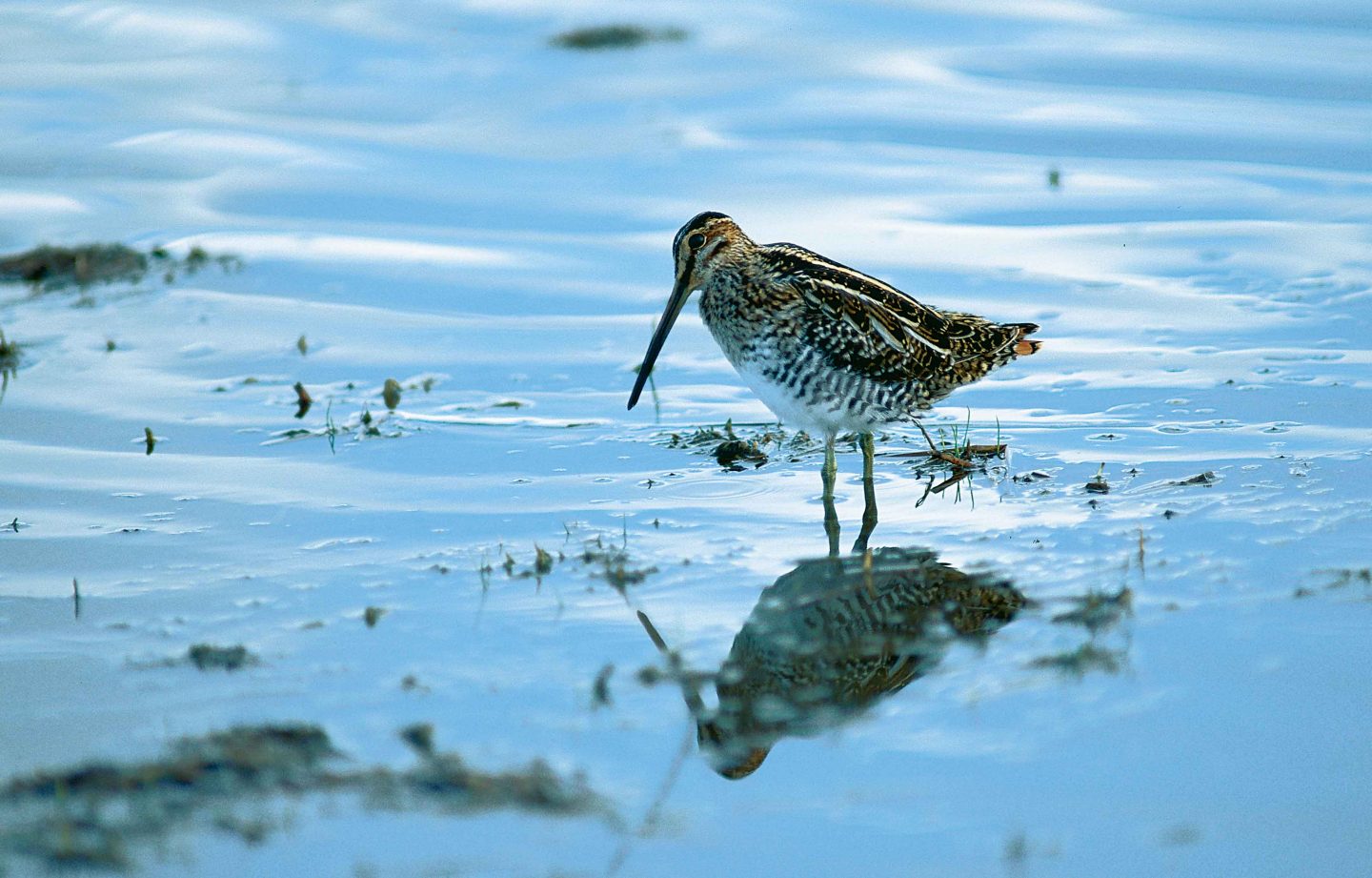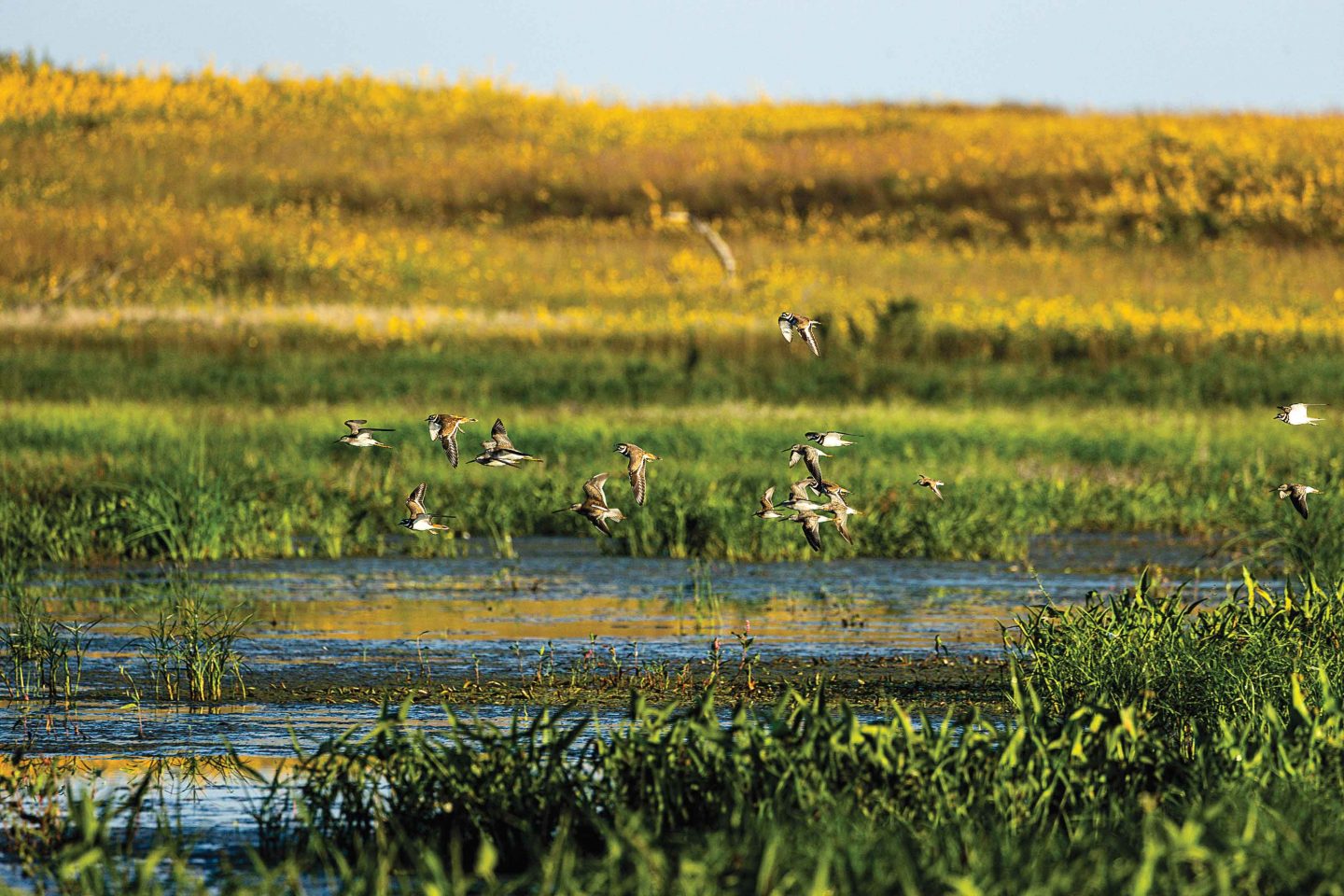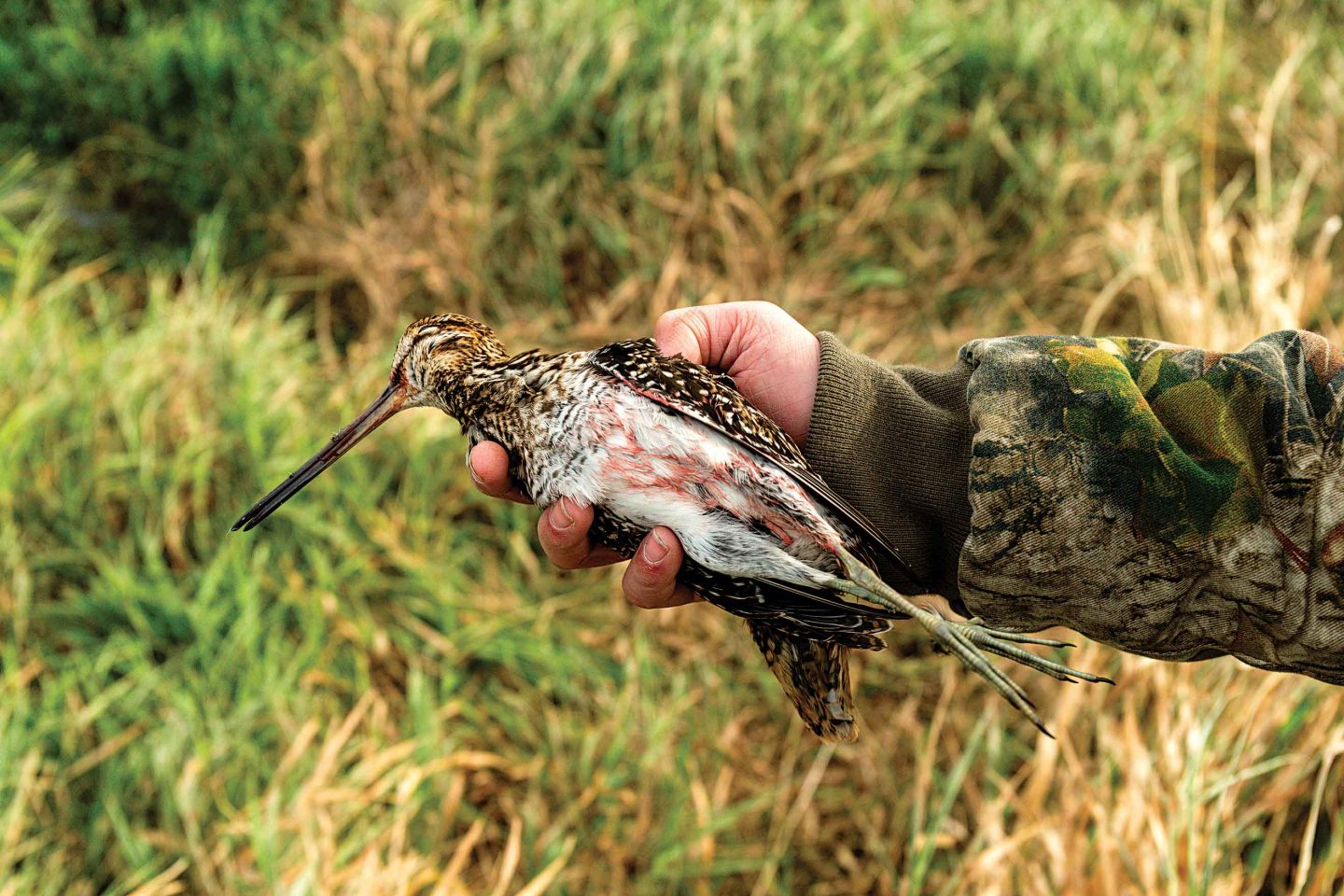
By Jeff Kurrus
Last year I had the good fortune of seeing thousands of Canada geese during a Platte River hunt. I watched my son shoot his first buck during the firearm season in Cass County. I witnessed covey rises and pheasant flushes. I watched the sun rise on a Missouri River duck hunt, and the sun set during more than one raccoon hunt.
But the most memorable hunt, the most absurd, is easily a Rainwater Basin snipe hunt.
Day 1
It was never our plan to hunt snipes. For many, this bird conjures thoughts of flashlights, empty bags and confused buddies. Even for our group, the relationship with this bird was sketchy at best.
My son and I were jump shooting ducks in the Rainwater Basin, often having a hard time finding birds because of the dry conditions. On many of our favorite areas, there was just enough water for long-beaked birds to dip into the shallow water next to the mudflats, feeding on a variety of insects and crustaceans, but not enough to hold the number of ducks we were wanting to sneak toward.
On one of these sites, duck numbers were down but there were a number of birds working the area that we thought were snipes. The long, straight, dark bill is the bird’s most recognizable characteristic, and we could immediately see it in flight.
Unsure, we held our shots until we could gather more information. So, on the way home, I called a friend who I knew would be open to any number of hunting possibilities, common or otherwise. I described the bird I was seeing, and he told me I was looking at common snipes.
A check of Nebraska’s hunting regulations told me the common snipe was a legal game bird. Because my young son and I planned to go the next day, and it looked as if he might get some shooting in, I could hardly sleep that night.
Day 2
We glassed the marsh from the road, first checking for any ducks that might have moved in. Quickly convinced this had not occurred, we set our sights on the long-beaked birds working the area — acrobatically diving toward various patches of water to drink and feed.
Then, for the next four hours, we had the shoot of our lives. Well … at least when we were quick enough to pull the trigger as they flew by.
Common snipe is similar to a mourning dove in size, and at times rival these athletic fliers with their constant maneuverability. When they set their wings to land, they resemble teal. Their wings cup suddenly, and they turn on a dime as they dive to the ground. If flushed from the ground, they move away from the shooter like a bobwhite. Their unbelievable camouflage makes them nearly impossible to see on the ground and forces the shooter to stay at a constant ready position when walking.

And don’t dare shoot more than one on the rise: with their mottled brown bodies, it’s hard enough to find one downed bird in the marsh.
Taking on the traits of these various game birds, common snipe quickly became one of the most challenging birds we have ever hunted.
Then, after the hunt, came the final test of the day. How would they be on the dinner plate? Because of their comparative size to dove, we first attempted to clean them the same way, breasting the birds with nothing more than our bare hands.
However, after cracking a second breastbone, which is less hardy than a dove’s, we applied a pair of shears to the birds the same way many do when cleaning doves. The results were excellent, with us having a pile of breasted birds in minutes.
Lastly, we simply pan-fried the breasts in butter, salt and pepper. We wanted to taste these birds in their simplest table fare form, and were not disappointed. We devoured them and readied ourselves for the morning.
Day 3
Because the birds work the marsh throughout the day, there was no reason to wake up early. With overcast, but steady weather continuing, we arrived at the wetland mid-morning, pockets full of non-toxic shot in our grasp, and went to work.
The birds in the area were wary, having been shot at the day before, but we were still able to pick up several birds by day’s end. This prompted even more of our snobby friends back home to question what we were doing in the first place. Another hunter watching our shoot from his pickup truck seemed to be wondering if what we were doing was even legal.
It is. Which is why we continued to do what we were happy to do, hunt for these challenging and tasty game birds as they worked their way across the marsh.
Then, as an added bonus, and testament to the value of the Rainwater Basin habitat, a lone rooster pheasant took flight at our feet while we looked for a downed snipe. Minutes later, we were comparing the size of each of them in our hands, a spectacular conclusion to one of our most memorable hunts ever.

Epilogue
A few days later, we returned to the marsh, but the snipe had completely disappeared, migrating through like other bird species on their way south for the winter.
Curious if we were alone in our snipe pursuit, we researched this species and found there was some interest in these acrobatic fliers and fine dinner guests.
Suggestions echoed our findings. Hunt with an open choke, such as improved cylinder, and use No. 6 or 7 in steel or some other non-toxic loads.
The habitat was just as we had found, shallow wetlands where the birds could use their long beaks to hunt while still standing on solid ground.
The last aspect remains the most important of all: Be open to hunting snipe. Yes, your friends are probably going to make fun of you. Yes, you’re probably going to question what’s become of your life.
But, if you can ignore these factors long enough to miss the first bird that zooms past, you’ll be hooked.
You will become a sniper, too.
HIP Number
The Migratory Bird Harvest Information Program, or HIP, is a U.S. Fish and Wildlife Service program designed to measure the harvest of migratory birds for management purposes.
All migratory game bird hunters must register annually with the Migratory Bird Harvest Information Program in each state you hunt before hunting ducks, geese, swans, mergansers, coots, cranes, snipe, doves or woodcock.
The phone number for the Nebraska Harvest Information Program is (877) 634-8687. You can call Monday through Friday from 8 a.m. to 5 p.m. for help registering for a HIP number. You can also register for HIP online at OutdoorNebraska.gov/HIP 24 hours a day.
